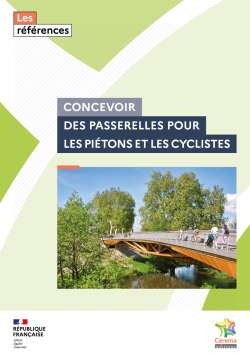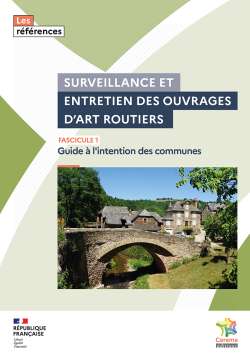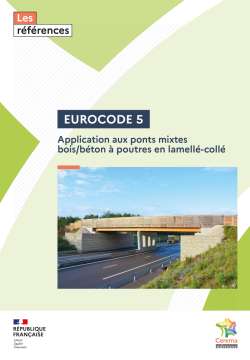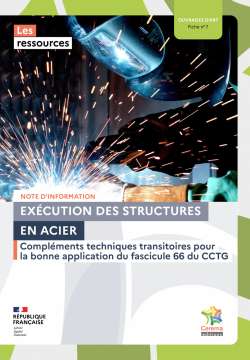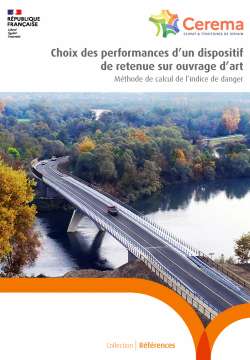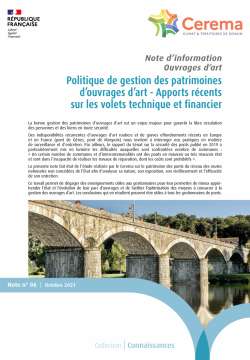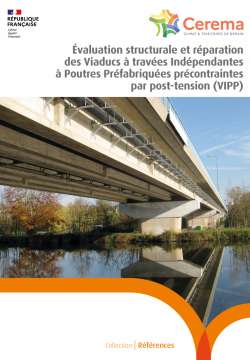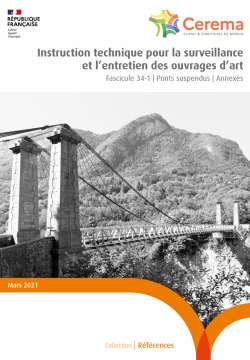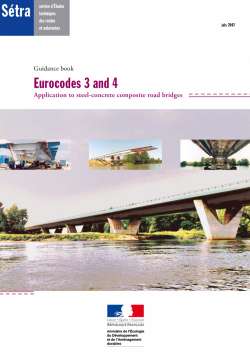
Guidance book Eurocodes 3 and 4
Application to steel-concrete composite road bridges
This guidance book explains two numerical examples for the design of bridges with steel-concrete composite structure under the Eurocodes (a two-girder bridge with transverse cross-girders and an open box-girder bridge). All the main justifications are addressed with precise references to the new set of applied standards. Emphasis is placed on the differences or new features of these standards compared to the usual French practice.
This guidance book explains two numerical examples for the design of bridges with steel-concrete composite structure under the Eurocodes (a two-girder bridge with transverse cross-girders and an open box-girder bridge). All the main justifications are addressed with precise references to the new set of applied standards. Emphasis is placed on the differences or new features of these standards compared to the usual French practice.
This document is intended to support the application of Eurocodes in European countries and particularly in France. It is intended especially for design engineers, design offices and contractors in charge of building steel-concrete composite bridges.
Contents
Part I: Introduction
1 - Purpose of the guide 11
2 - Eurocodes used 11
Part II: Composite two-girder bridge
1 - Introduction 15
2 - General design data 15
2.1 - Traffic related data 15
2.2 - Environmental data 17
3 - Description of the deck - Construction 18
3.1 - Longitudinal elevation 18
3.2 - Transverse cross-section 18
3.3 - Structural steel distribution (main girders and transverse cross bracing) 18
3.4 - Construction phases (slab concreting) 21
3.5 - Reinforced concrete slab 24
4 - Materials 28
4.1 - Material toughness and through-thickness properties 28
4.2 - Concrete 30
4.3 - Reinforcement 31
4.4 - Shear connectors 31
4.5 - Partial factors for materials 31
5 - Actions 33
5.1 - Permanent loads 33
5.2 - Concrete shrinkage 34
5.3 - Creep – Modular ratios 37
5.4 - Variable actions 39
6 - Combinations of actions 45
6.1 - Design situations 45
6.2 - Notations 45
6.3 - ULS combinations other than fatigue 47
6.4 - SLS combinations 47
7 - Global analysis 49
7.1 - Analysis methods: general 49
7.2 - Internal forces and moments – Stresses 50
8 - Justification of the composite cross-sections at ULS other than fatigue 57
8.1 - Classification of cross-sections 57
8.2 - Cross-section justification principles 60
8.3 - Verification of cross-section at internal support P1 65
8.4 - Verification of cross-section at mid-span P1-P2 71
8.5 - Verification of the frame post rigidity 74
8.6 - Lateral torsional buckling (LTB) of the lower flange in compression around internal support P1 76
9 - Justification at fatigue ULS 86
9.1 - Verification of the structural steel bridge part 86
9.2 - Verification of the longitudinal reinforcement 100
10 - Justification of the cross-sections at SLS 106
10.1 - General 106
10.2 - Stress limitations 106
10.3 - Web breathing 112
10.4 - Control of cracking 113
11 - Shear connection 118
11.1 - General 118
11.2 - Design resistance of headed stud connectors 118
11.3 - Design for characteristic SLS combination of actions 119
11.4 - Design for ULS combination of actions other than fatigue 121
11.5 - Design for fatigue ULS combination of actions 125
11.6 - Shear connection detailing 128
11.7 - Synopsis for the design example 130
11.8 - Influence of shrinkage and thermal action on the studs design at both deck ends 131
12 - Local justifications in the concrete slab 133
12.1 - Transverse reinforcement verifications 133
12.2 - Longitudinal reinforcement verifications 141
12.3 - Punching shear (ULS) 143
Part III: Special features of composite box-girder bridge
1 - Description of the composite box section 149
1.1 - Main characteristics 149
1.2 - Structural steel distribution 150
2 - Actions and combinations of actions 153
2.1 - Permanent loads 153
2.2 - Concrete shrinkage 153
2.3 - Concrete creep – Modular ratio 153
2.4 - Variable actions 1543 - Global analysis 155
3.1 - General 155
3.2 - Shear lag 156
3.3 - Internal forces and moments 156
4 - Section analysis 158
4.1 - Shear lag (SLS and fatigue ULS) 158
4.2 - Shear lag (ULS) 161
5 - Verification of the box section at support P1 for ULS combination of actions 162
5.1 - Mechanical properties of the gross cross-section 162
5.2 - Internal forces and moments 163
5.3 - Effective area of the bottom flange 163
5.4 - Effective area of the web 168
5.5 - Effective mechanical properties of the box section 169
5.6 - Bending resistance verification 170
5.7 - Shear resistance verification 170
5.8 - Interaction between moment and shear force 172
5.9 - Conclusion 173
6 - Verification of the box section at support P1 for SLS combination of actions 174
Appendices
Appendice I: References 177
Appendice II: Class 4 I-shaped cross-section 180



